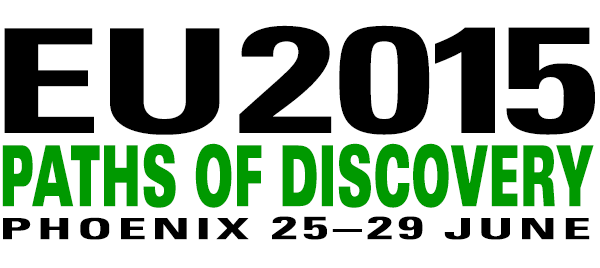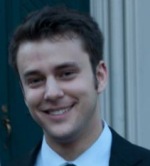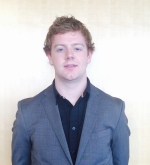Introducing the EU2015 Conference Scholars! Congratulations!
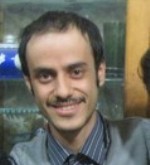
Mohammad Reza Shafizadeh
Iran
It is with pride and enthusiasm that we present the story below of the young Iranian scientist, Mohammad Reza Shafizadeh. The Thunderbolts Project offered Mohammad a student scholarship to the EU2014 conference, and, after much work, he gained approval from the Iranian government to attend. Sadly, under the time constraints, it was not possible to gain a US Visa. Now, however, Mohammad has received the necessary approvals to attend EU2015 as a conference scholar. What might have seemed beyond reach when we first heard from him 3-years ago is now reality.
What follows is an excerpt from the Thunderblog written by Dr. Hilton Ratcliffe last year before Mohammad graduated in February 2015:
Mohammad Reza Shafizadeh was born in Tehran in 1990, and except for two years when the family relocated temporarily to Dubai in the United Arab Emirates, has lived there all his life. His bent for science was already clear in high school, where he graduated in mathematics and physics. He enrolled in the Astronomical Society of Iran while still at school and was later chosen by the Education Minister of Iran as the year’s best high school researcher in astrophysics and cosmology. He went on to attain a diploma degree in those subjects and is currently in his final year of a bachelor’s degree in engineering physics at the Science and Research Branch of I. Azad University in Tehran.
Among his many achievements, Mohammad was a member of the Unprofessional Group of Crescent Sighting of Iran. The UGCS is the foremost crescent sighting group in the world, and it fulfills a very important function in Muslim cultural practice. In addition, he is executive director of the International Occultation Timing Association of the Middle East and president of the Physics Scientific Association of his university.
To support his studies, Mohammad found himself a variety of jobs, including teaching physics and astronomy classes. His deep interest in the history of science spawned a love of travel, particularly across the vastness and variety of his native Iran, where he can witness artifacts from the birth of civilization and the foundations of physical science and astronomy. The bonus is that his sojourns in the desert provide peerless opportunities for night sky viewing . . .see the rest of the story at Thunderblog.
Mohammad Reza Shafizadeh received his degree in Engineering Physics from Science and Research Branch of I. Azad University in Tehran in February 2015. He is the Organizer and Director of the Persian Division of The Thunderbolts Project. www.persiantbolts.com
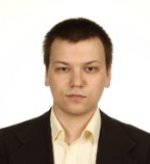
EUGENE BAGASHOV
Belarus
Why am I interested in the Electric Universe? Because it has reignited the interest towards space and astronomy in my life. After having read virtually everything that was available about the Universe early in my youth, I thought that there wasn’t much new to explore; that everything there is is known and pretty well documented; and that even our Solar System appeared to be a cold dead “clockwork” place. But then, after a decade or so – in May 2014, I’ve stumbled upon a Thunderbolts channel on youtube (through a recommendation that Ben Davidson gave in one of his videos; and it was some climatic discussion that drove me to his videos in the first place), and the stuff that I’ve found there significantly changed my worldview.
The Universe (as well as the history of mankind) was no longer well understood and static, dead. It became rather alive, problematic and inspiring for exploration and discovery. So I find the Electric Universe approach very philosophical and really scientifically productive, since it encourages me to keep asking the hard questions and not to be afraid to change the whole paradigm, if the former one doesn’t adequately account for the observed phenomena, not any longer at least. I also find it very appealing that it also includes a huge volume of cultural and historical phenomena in its discourse, and does that in a very elegant and nontrivial way. This truly is a powerful advantage of the Electric Universe paradigm, and it also sparks my interest in a variety of remote (with respect to physics) fields of knowledge.
Eugene is physicist pursuing a PhD from the Joint Institute for Power and Nuclear Research – Sosny, Belarus. He recently appeared in a Space News entitled “Does Gravity Alone Rule the Cosmos?” and will be speaking at EU2015.
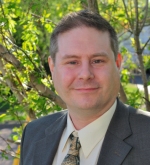
NEIL THOMPSON
New Brunswick
Big words to say that people get stuck in their ways and they aren’t open to new ideas. I wrote that thinking that I was the first to discover it. I wasn’t. However, the words are mine and they were my moment of ‘Eureka!’ I was trying to describe how I came to realize that I found the link to all these mysteries from around the world, from old books to obscure documentaries, and I found a rational sensible scientific theory that became self-reinforcing. That is to say that the facts tend to support each other when looked at from a different point of view, whereas they stay anomalies in another point of view. The new point of view creates a whole new set of questions, and renders new directions of investigation. That is what this journey is about.
“Felix, qui potuit rerum cognoscere causas.” — -Fortunate is he, who is able to know the causes of things.
~Virgil
The changing of your perception from the current paradigm, the current worldview as a whole, to a new paradigm, which gives a clearer understanding of ourselves as individuals and as a people, and gives a whole new understanding of the solar system, the galaxy and indeed the universe is where we are going. It may be the final piece of a long dream of uniting the sciences and in itself can bring understanding and clarity to the world’s religious tensions. Obviously it seems an impossible utopian fantasy at this juncture, and who’d blame you? A skeptical mind is healthy, it shows your thinking. I don’t present all the below as gospel, or something to believe in. I invite you to challenge the science, look for better explanations and question my assumptions. That’s how I got to this far, I hope that this work inspires others. All I know for certain is once you go down the rabbit hole…
You can’t go back.
That singular moment, in your mind, when your worldview is fundamentally altered as to begin to function within the new borders of what we understand to be reality is called a ‘Paradigm Shift’. It’s also can form a type of cognitive dissonance that prevents two people from seeing things from another’s point of view. In this case it’s not ideological, like it is in most situations, say, between two rival nations, or people from different faiths. Whereas one is often a matter of interpretation, this is not. This is coming to completely different understanding of the basic nature of the universe. It is called a paradigm shift because it does not go back. You shift, or you don’t. You cannot be halfway, and there is not much of a middle ground.
Neil Thompson is a senior majoring in Electronics Engineering Technology and hails from New Brunswick. The essay material above is an excerpt of his 26-page illustrated school thesis: As History has Shown/Or: How I stopped worrying and learned to love the Aether. An abridged version is available here.
OWEN SANDERS
Oregon
Owen Sanders is a junior at Portland State University and majoring in pre-med.
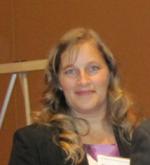
NADINE STRAITT
Arkansas
Natural climate systems do not operate in isolation; they interact with climatic systems all around them. In the context of an Electric Universe, we must consider the ever changing space climate surrounding our planet and the effects of its interaction with the earth’s environmental systems if we are to better understand the processes that lead to natural changes in our climate here on earth. By investigating a single space climatic process, then following its effects on the earth’s environment, and exploring the associated technologies and social processes impacted, Nadine Straitt has been able to outline a mitigation strategy for one environmental impact area. This model of a scalable solution demonstrates how technology can help counter the localized effects of climate change by preserving water resources, providing a source of environmentally-friendly abundant and sustainable energy, while at the same time helping to mature the social and economic systems of the local peoples affected by natural environmental changes in the Electric Universe.
Nadine Straitt, a National Science Foundation Infinity Scholar, has been actively involved in social-technological research and applied technology for sustainable energy and environmental projects since 2003. She is a graduate of the Wind Turbine Technology Program at Iowa Lakes Community College, a former wind turbine technician with Mitsubishi Power Systems America, a research leader in community scale sustainability projects, executive director of a non-profit research organization, and is currently a Graduate Research Assistant at Arkansas State University where she is completing her thesis phase of a Master’s in Environmental Science Program. Nadine is a well-known and respected advocate of environmentally friendly sustainable energy, a speaker at schools, and civic organizations such as Rotary International.
Nadine Straitt is getting her Masters Degree in Environmental Science from Arkansas State University.
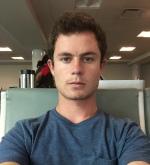
DANIEL GARCIA
Argentina
Last year I attended the Electric Universe conference in Albuquerque, New Mexico, sponsored by a parent of a college classmate. Physics is my favorite subject and when I heard Dr. Pierre-Marie Robitaille, PhD disprove Kirchhoff laws of thermodynamics, I was amazed. I have studied Kirchhoff’s laws and immediately saw the flaw that Dr. Robitaille pointed out. The speakers at last year’s conference changed my life forever.
Here are some things I know:
The observed movement in the universe cannot be explained with the gravitational force alone; the only force that is considered now is gravity. The schools do not even discuss the possibility of electrical influence in the universe. But the universe does not behave the way that it should; so, scientists have created dark matter and dark energy stories to fill gaps in their gravity theories. These substances are as artificial as the one our ancestors used to explain the sky (geocentrically model), which completely ignored any other possible explanation for the observations like electromagnetic interaction.
The movement of charged particles creates cosmic magnetic fields just like planets have magnetic fields. Accepting the magnetic fields in space allows us to explain a lot of complex astrophysics effects like the acceleration of the solar winds or sunspots formation ( Dr. Pierre-Marie) and the gravitational lensing assigned to gravity. It would explain the fact that stars orbiting to far from the center of the Galaxy are just too big and orbiting so fast that gravity cannot hold them lonely.
Gravity acts in a straight line and the electromagnetism has the left hand rule for forces and right hand rule for magnetic fields that make us think that can provide the rotation we observe in the universe.
The sun is not as hot as they say.
There are comets that have been boiled at 100 million km from the sun. Astronomers don’t know why comets split. Also, when comets split far away from the sun, the rapid splitting cannot be explained by solar heating or gravitational forces, rather the electric comet theory could explain it all.
The four phases of water by Dr. Jerry Pollack is just amazing. Another interesting man is David Talbott, whose explanations of events in the sky being viewed as religious events makes me consider just how much of my Catholic teaching could be just superstition.
I watch The Thunderbolts Project videos on YouTube and do not understand why science has stopped being science and why so much is taught that is wrong. I would really like to be part of the electric universe team, researching and attempting to understand our universe.
Daniel Garcia is a senior at Universidad Tecnologica Nacional in San Rafael, Mendoza, Argentina, and is majoring in Industrial Engineering.
LUKE WEGREN
Alberta
Having followed the EU paradigm since stumbling across it at least 5 years ago, I found it very rewarding to get to attend the “Electric Universe Workshop” in late 2014. I look forward to being a scholarship candidate for the upcoming annual EU conference.
In my youth I always enjoyed learning the fundamentals of how things work, this is what led me to a career in engineering (specifically Electrical Engineering). It was through this educational process that I formally learned to question everything, from inventions and processes to frameworks of science. In my field of study this meant improving efficiency and usefulness of products and services. In my interests, it meant not simply taking things at face value.
When it came to the cosmos, I have had a lifelong interest in how everything “up there” worked, but couldn’t quite accept the epistemology and complex explanations that seemed to rely more on theory and mathematical models and less on observations and empirical evidence. I began to see patterns between electromagnetics and cosmology and the lack of association between the two. Our universe is made up of 99% plasma (charged particles) and yet instead the interactions are currently explained solely using the mass of these particles. This lead to an Internet inquiry containing the search words “electrical” and “universe” in which I stumbled upon the Thunderbolts group and a whole community of like-‐minded individuals with similar qualms and curiosities.
I look forward to the opportunity to further converse, listen, learn, and share with other intelligent and technical professionals with a similar philosophy.
“Science works on the frontier between knowledge and ignorance. We’re not afraid to admit what we don’t know. There’s no shame in that. The only shame is to pretend that we have all the answers.” -‐ Neil deGrasse Tyson, Cosmos: A Spacetime Odyssey
Luke is a senior at University of Alberta majoring in Electrical Engineering.
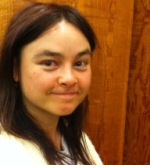 CAMERAN FRISBEE
CAMERAN FRISBEE
California
After completing an Air Force Enlistment Service in the field of Aircraft maintenance on Navigation equipment, Cameran has continued to stay interested in Astronomy and areas that have to do with the potential future of Space as well as the greater understanding of Ancient Human History. While currently a student at the University of Advancing Technologies for Emerging Technologies in Phoenix, Arizona, Cameran hopes to continue the work and research of the Electric Universe for future generations using new models of understanding, such as programs that can be integrated in Planetarium shows for younger students.
Cameran has been a volunteer and scholar at past conferences. Many may remember her as the woman who put the lavalier mics on the speakers at EU2014.





